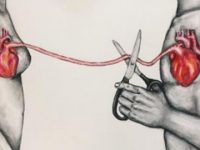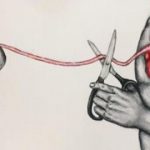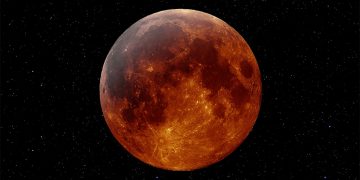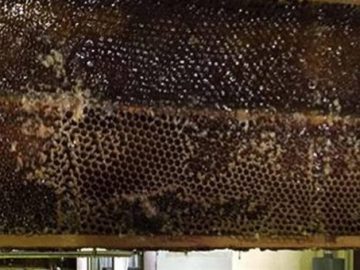Urban, historical, home-made myths and lies that we have been told as kids and we still believe in today! Have you been told that you should not swim after having a meal? Or that stress causes your hair go white? How about sleeping eight hours every night for a good health? And did you know that Walt Disney did not actually create the most popular mouse on the planet Earth? We chose randomly 15 of them so, let’s start the countdown. You’ll be surprised.
#15 Myth: Carrots and blueberries improve vision
Truth: You’ve probably heard the myth that eating lots of carrots or blueberries will magically improve your vision. Well, the bad news is that it’s a total lie.
The truth is that carrots are rich in beta carotene (Vitamin A), and thus, eating lots of carrots helps promote good eye health.
The myth began during World War II, when the Nazis were bombing the bejeezus out of London at night. Out of nowhere, the British Royal Air Force started shooting down more Nazi planes with the help of a new radar that the RAF, of course, did not want anybody to know about, so the Ministry provided another reason for their success: carrots.
And while carrots may not be the miracle vegetables, blueberries might be.
The studies have revealed that anthocyanins, pigment molecules in blueberries and other plants, encourage the regeneration of key molecules in the eye involved in perceiving light, but researchers found that a blueberry-supplemented will not actually help a person see in the dark.
#14 Myth: Mice love cheese
Truth: Research has shown that mice will eat pretty much anything that has minor nutritional value. So yes, mice will eat cheese although cheese isn’t among its favorite foods it will eat.
Mice (like most of the small mammals on our planet) are lactose intolerant. It means that they can’t eat dairy products, things that contain a lot of milk from animals. since cheese is made mostly out of animal milk it has bad effects on the mouse.
The myth starts back in the medieval times when they were constantly being discovered in cupboards, eating the household cheese stash. But this would have been because it was the only food they could get to since the meat would be hanging and salted, and grain would be stored in jars. So it was more matter of survival: cheese or starvation.
Given a choice though, mice seem to prefer sweeter treats, such as fruits or grains.
#13 Myth: Dogs don’t see colours
Truth: Modern science has proven that dogs can see colors, but not in the same way that we do. The palette of colors they can see is limited in comparison to ours. Eyes have “rods” and “cones” to help identify color. Rods tell us how bright or dim something is (black or white) and cones help us identify color. Humans have three kinds of cones, which help detect yellow, violet, and green. Dogs only have two types of cones, so they see orange, yellow, and green as yellow. Blue-green is seen as white and red looks as though it is brownish-black. While they can see blue, they can’t distinguish shades, especially as the color blue gets darker.
#12 Myth: A coin thrown from a skyscraper can kill a person
Truth: Brifly, NO. Objects dropped from skyscrapers experience constant acceleration – in other words, they go faster and faster, their speed constantly increasing, at a rate of just under 10 metres per second. But air resistance also increases. At a weight of 7.12g, a 2p coin would in theory reach terminal velocity at just over 19km an hour, hardly fast enough to kill you.
#11 Myth: Stress causes gray hair
Truth: Stress is more likely to cause hair loss and an increase in shedding than cause gray or white hair. Gray hair is largely influenced by genetics and a complex series of cell chemistries. But if the person is predisposed to gray hair, stress will make it appear sooner.
Hair pigmentation is said that can be disrupted due to certain factors. As the hair grows out of the follicle, various processes take place in a timely fashion to produce a shaft of hair with the correct color (genetically speaking). One of these processes involves the melanin-producing cells that are present and whose job it is to provide color to the hair during the hair-growth cycle. During this cycle, anything that interrupts the flow of events can cause the non-pigmentation of the hair shaft.
#10 Myth: You can’t swim after you eat
Truth: The myth involves the possibility of suffering severe muscle cramping and drowning from swimming on a full stomach. It’s true that the digestive process does divert the circulation of the blood toward the gut and to a certain extent, away from the muscles, but the fact is that an episode of drowning caused by swimming on a full stomach has never been documented. Neither the American Academy of Pediatrics nor the American Red Cross makes any specific recommendations about waiting any amount of time after eating before taking a swim.
#9 Myth: Ostriches hide their heads in the sand when they are scared or threatened
Truth: It’s actually an optical illusion! Ostriches are the largest living birds, but their heads are pretty small. And if you see them picking at the ground from a distance, it may look like their heads are buried in the ground. But ostriches don’t bury their heads in the sand—they wouldn’t be able to breathe! But they do dig holes in the dirt to use as nests for their eggs. Several times a day, a bird puts her head in the hole and turns the eggs. So it really does look like the birds are burying their heads in the sand!
#8 Myth: Nero and violin
Thuth: Maybe many of you haven’t heard the story about Nero and the violin. The infamous phrase “Nero fiddled while Rome burned” has come to mean a person who is neglecting their duties, probably by doing something frivolous. Nero is painted as an emperor who didn’t care about his people, but it’s likely that he didn’t deserve such a bad reputation.
For six days and seven nights the citizens of ancient Rome watched helplessly as their city burned. The great fire that consumed Rome in A.D. 64 spread quickly and savagely. After it was over, 70 percent of the city had been destroyed.
The idea that Nero fiddled while Rome burned is odd. But a mad tyrant who preferred to play music rather than offer succor to his people isn’t unbelievable, and Nero was unquestionably cruel. The myth is busted, however, when one realizes that the violin wasn’t invented for another 1,500 years after the fire. In other words, it’s impossible that Nero fiddled while Rome burned. So where did this idea come from?
One explanation is that Nero actually did consider himself a serious musician. While he certainly didn’t play the fiddle — since it was not yet invented — Nero did play another stringed instrument, the harp-like cithara.
Did Nero neglect Rome while it burned? Reports claim that Nero was thirty-five miles away from Rome at the time of the fire, as he was staying in his villa at Antium. However, he returned to Rome immediately when word of the fire reached him in order to begin relief efforts. As the fire raged on, Nero even opened up his own gardens to provide a temporary home for those who were now homeless. He also ordered the construction of emergency accommodation and cut the price of corn, as well as provided food directly, so that people could eat. Besides this, he paid for much of these relief efforts out of his own pocket.
While Tacitus claims the singing story was a rumour, Suetonius wrote about it with conviction. Nero faced problems during his reign from the very start, when it was reported that his own mother poisoned his predecessor, Claudius. He was also blamed for the death of Claudius’ son Brittanicus, who was being urged to take his proper place as Emperor by overthrowing Nero. Numerous other deaths were thought to have been committed by Nero’s hand, including one of his wives and his own mother.
Nero ended up committing suicide—or at least, begging his secretary to kill him when he lost the nerve to do it himself—four years after the fire. Accounts of his life and of the time of the fire are highly contradictory. Further, Suetonius and Tacitus wrote their histories fifty years after Nero died, and Cassius Dio wrote his 150 years later.
#7 Myth: England is the rainiest country
Truth: The Queen, Big Ben, tea, an umbrella, rainy weather – are the common thing that any person thinks of England. British people never seem to talk about anything else. In fact, it’s the best ice breaker during conversations.
According to the Met Office Climate data, over the 30 year period, there were 106.5 days of rainfall per year on average in London (which counts as a day in which 1mm of rainfall or over fell). This means that there was rainfall on 29 per cent of days per year and on average it didn’t rain 71 per cent of days per year. Average rainfall is 557.4mm with 1410 “sunshine hours.”
There are more rainy days in Miami (at 135) and Orlando, Florida (117) than there are in London. New York City clocks in at 122 days and 1,268mm of rain. Washington DC, Rio de Janeiro, Sydney, and Mexico City all have more rainy days on average in any given year than London.
This is mostly due to the island-state’s unfortunate location, being right in the path of the atmospheric jet stream. The flow of these streams is not a neat curve but a series of massive meanders. Britain is right on the northern side of those meanders where conditions are cooler and wetter which means which means the country keeps getting hit by rain.
#6 Myth: Cats always fall on their feet
Truth: Cats (along with other animals including rats and rabbits) have something called an air-righting reflex. This means that when they sense they’re falling and they’re the wrong way up, they will attempt to flip over in the air in the hope of landing feet first. And because cats have an unusually flexible spine and don’t really have collarbones, they’re able to do this really well.
However, if they are falling from an insufficient height to execute their backflip move (they need to drop at least half a metre or so to have enough room to manoeuvre) they can fall in any position.
Cats can also break bones by landing on concrete or other hard surfaces from heights of more than about ten metres. But if they fall from more than about five stories, something interesting happens – they hit what’s known as terminal velocity, when they’re falling as fast as gravity will let them. There’s some suggestion that in this situation, once a cat has got itself the right way up, it will relax and spread out, like a parachute, which might help to reduce injuries when it hits rock bottom.
So while it’s true that cats can – usually- land on their feet, they don’t always make it out unscathed, and in some cases reach the end of their (also mythical) nine lives in a rather messy and tragic manner. Probably best to keep the windows shut if you want to keep your kitty in one piece.
#5 Myth: Asteroid belts are deadly
Truth: There are loads of asteroids in the outer space, about half a million asteroids that we know of. However, there are also lots and lots of miles between them to cross. When NASA had to send a probe through it, their scientists said the odds of colliding with an asteroid were one in a billion. The odds of hitting an asteroid in the middle of an asteroid belt aren’t a whole lot higher than the odds of you hitting one while driving your car to the grocery store.
#4 Myth: Walt Disney is Mickey Mouse’s author
Truth: We all know Mickey Mouse, right? He is the most famous mouse on Earth who by the way is 80 and there’s not a gray hair on him.
Mickey’s story, however, starts with a rabbit, Oswald the Lucky Rabbit. When Disney met executives to negotiate another contract in 1928, the rabbit was still popular, but the studio told him that it had hired away all of his employees and retained the rights to Oswald. Universal offered to keep Disney (for a lower salary) but he refused. Ub Iwerks, the one loyal animator who stayed with Disney Bros, started working on Oswald’s replacement, and the rabbit turned into a mouse. They named him Mortimer, but Disney’s wife hated the name and Mortimer soon became Mickey.
Ub Iwerks designed Mickey’s physical appearance and animated the first three Mickey cartoons almost single-handedly. But it was Walt Disney himself who initially supplied the key elements of Mickey’s personality–and his voice until 1947.
#3 Myth: No one can drown in the Dead Sea
Truth: The popular wisdom that no one can drown in the Dead Sea because they’ll float on the super-salty waters is totally wrong, but it’s true that drowning in the Dead Sea is different from drowning in ordinary waters. This concentrates the salts so much that the Dead Sea is 10 times as salty as the ocean. The Dead Sea was named the second most dangerous place to swim in Israel. One big problem is exactly that it’s hard to get a foot on the bottom.
It’s true that a person can’t drown in the conventional way. Objects in water stop sinking when they displace a mass of water equal to their body mass. In unsalted water, that means a large amount of the body is underwater – all of it for particularly dense people. In dense, salty water, a little body displaces a lot of mass, and most of the body stays out of the water. It’s hard to drown a person when most of their body is floating on top of the water like a cork.
Floating on their backs, a person’s face is lifted well clear of the water. If they turn over, or if they trip on their way into the sea and fall face down, then the entire back of their body is clear, but their face is pushed into the sea. Because of the water density, it’s hard for a person to push an arm into it and turn their body over. The salt of the Dead Sea also contributes to drowning deaths because even a few swallows of it destroys the electrolyte balance in the body. People poison themselves with salt. Massive doses of salt hurt the heart and kidneys.
#2 Myth: Opposites attract
Truth: Apparently this works for magnets only! In a 2011 study, researchers at the University of California at Berkeley did a research and monitored number of unsolicited messages received by 3,000 members of an online dating website. The results proved that opposites do not attract at all – and that like is drawn towards like.
The myth maybe comes from the fairy tales. Beauty and the Beast, Cinderella, and The Little Mermaid all perpetuate the idea that the ideal partner is someone who has the opposite qualities to ourselves. But a new study tracking people’s digital footprints – how they behave online – suggests this isn’t true to life.
For decades, psychologists and sociologists have pointed out that the idea that opposites attract is a myth. In fact, almost all the evidence suggests that opposites very rarely attract.
#1 Myth: We need to sleep eight hours to function normally
How many hours of sleep do we actually need to stay alive?
Truth: Sleep experts say that most adults need between seven and nine hours of sleep each night for optimal health although it is proven that people who sleep six hour, live the longest. If you sleep fewer hours, eventually you will have to sleep more in the next few nights. Our body does not seem to get used to less sleep than it needs. Teens need at least 8.5 to 9.25 hours of sleep each night while older people may wake more frequently through the night and may actually get less nighttime sleep, but their sleep need is no less than younger adults. Because they may sleep less during the night, older people tend to sleep more during the day.




































Connect with us